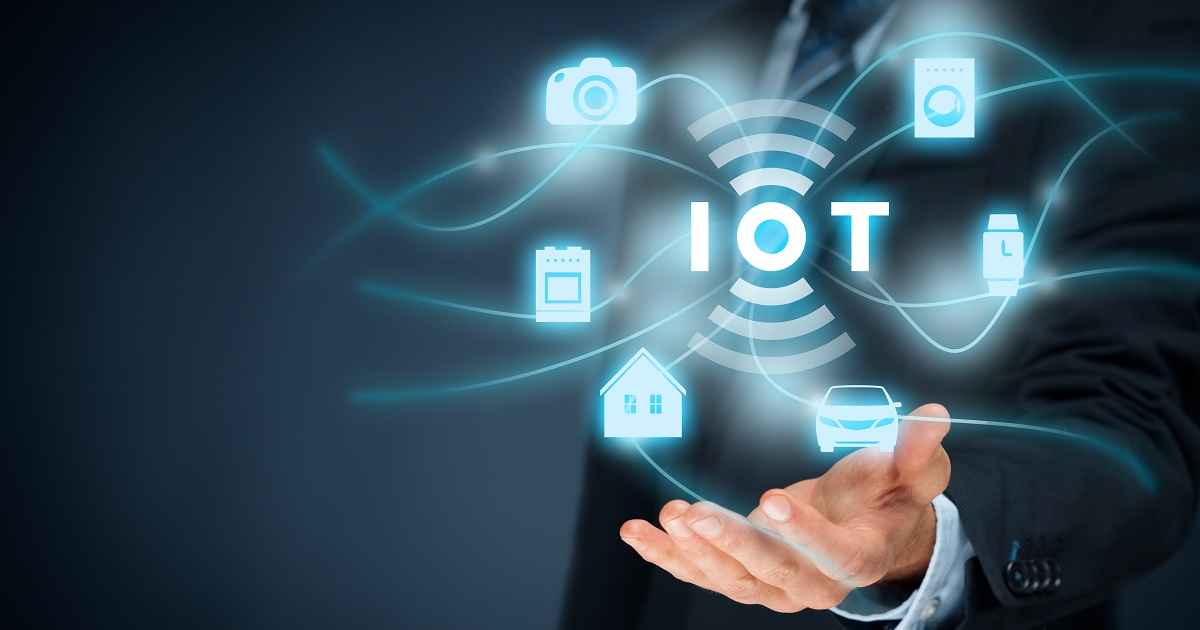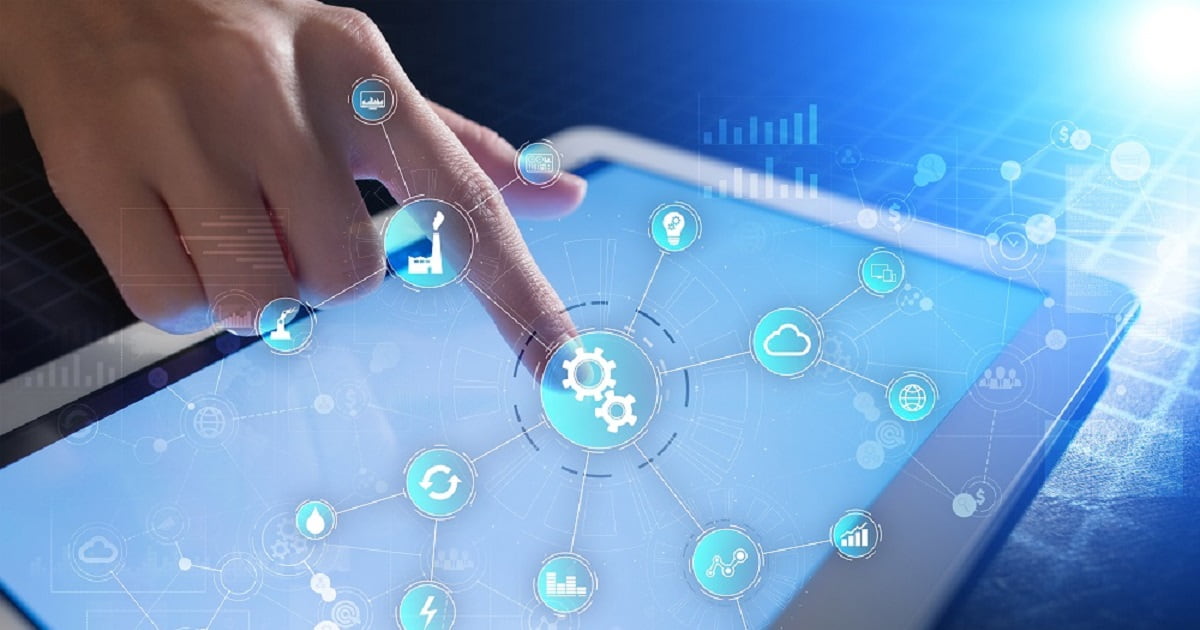
Industrial IoT, IoT Security
Article | July 12, 2023
5G trends are shaping the future of various technologies, from the Internet of Things to virtual reality. Learn more about the top trends in 5G to stay ahead of the competition in this sector.
Contents
1 The Current State of IoT Data Security
2 Top Trends in IoT Data Security in 2023
2.1 Emergence of AI-powered Security Solutions
2.2 Potential of Blockchain Technology
2.3 Growing Use of Zero-trust Security Frameworks
2.4 Greater Emphasis on End-to-end Encryption
2.5 Industry and Government Collaboration
3 Conclusion
As the Internet of Things (IoT) continues to rapidly expand, data security has become a critical concern for businesses and consumers alike. With recent high-profile breaches and cyberattacks, the latest trends in IoT data security focus on implementing stronger encryption and authentication protocols, as well as enhancing device-level security measures to protect sensitive data from potential threats.
1 The Current State of IoT Data Security
The growing adoption of IoT has led to a digital transformation in the way businesses operate. IoT technology has enabled organizations to collect and analyze vast amounts of data in real-time, allowing for improved decision-making, increased operational efficiency, and enhanced customer experiences. Despite these benefits, organizations are currently facing significant IoT data security challenges that must be addressed to fully realize the potential of this technology.
Companies recognize unauthorized access (43%), data privacy (38%), and data integrity (31%) as top IoT security challenges.
(Source: Statista)
Businesses are actively addressing these security challenges by investing in IoT and data security solutions. The global market for IoT data security continues to grow, and companies are increasingly investing in strategies for data security in the IoT. To secure access to mission-critical connected devices and sensitive data, it is imperative for businesses to keep track of IoT trends in data security.
2 Top Trends in IoT Data Security in 2023
2.1 Emergence of AI-powered Security Solutions
AI-powered security systems can rapidly detect and respond to attacks, reducing the likelihood of significant damage to IoT devices or networks. In particular, its ability to analyze vast amounts of data in real-time and identify anomalies or potential security threats makes AI a vital component of an IoT data security strategy.
Detecting an IoT security breach in progress is possible with AI security systems, which identifies unusual behavior by analyzing data patterns from IoT devices. AI can also be used to diagnose potential vulnerabilities in IoT devices and networks, allowing organizations to take proactive measures to address them before they are exploited.
The pattern recognition capabilities of AI also help secure IoT technology through predictive analytics. By analyzing past data breaches and attacks, AI systems detect potential cyberattacks and develop predictive models to detect and respond to them proactively.
AI-driven security systems have the potential to streamline incident response by lessening the load on cybersecurity teams and reducing response time. The ability to adapt and learn from a previous cyberattack allows machine learning (ML) algorithms to create novel strategies that prevent similar attacks in the future.
AI represents a significant development in addressing IoT security concerns since it provides sophisticated capabilities to protect IoT networks and devices that conventional security measures cannot provide. AI-enabled security systems deliver immediate identification, reaction, and deterrence of possible threats, which is why they will be critical in ensuring data security in the IoT.
2.2 Potential of Blockchain Technology
Blockchain's unique features, such as decentralization, immutability, and cryptographic security, provide a robust framework for secure communication and data sharing among IoT devices. By leveraging blockchain technology, businesses can ensure their IoT data's integrity, confidentiality, and authenticity.
One of the key advantages of using blockchain for IoT data security is its decentralized nature. Blockchain networks are distributed and run on a peer-to-peer basis, making it difficult for attackers to compromise the network. This also makes it an ideal solution for recording and securing data from multiple access points, such as IIoT systems.
Additionally, blockchain networks are designed to be immutable, making them an ideal solution for IoT data security and providing a tamper-proof and transparent ledger for recording data flow. This can help enterprises identify and mitigate security threats more quickly and efficiently, reducing the risk of cybersecurity incidents. A research paper published in Wireless Networks highlights the advantage of using a Blowfish Blockchain Model to enable IoT data sharing security, particularly for multimedia content.
Blockchain technology is a promising solution for securing IoT data. Its unique features, including decentralization, immutability, and cryptographic security, make it an ideal candidate for many IoT use cases. This technology can potentially transform data security for IoT devices by offering the IoT sector the solution it requires.
2.3 Growing Use of Zero-trust Security Frameworks
Zero-trust frameworks ensure that only authorized devices and users can access sensitive data and systems, protecting against insider threats and external attacks. This is especially important in IoT environments, where devices may lack traditional security measures like firewalls and antivirus software.
Device identity management is a critical component of zero-trust security for IoT data. Only recognized devices are allowed access to a network or data by leveraging processes and technologies that authenticate device identity. With Zero Trust, any connected device must be authorized before accessing any resources, including data.
By closely monitoring and managing access, businesses can maintain the security of the IoT. This protects against threats that exploit weak device identity management. Overall, zero-trust security frameworks are essential for safeguarding IoT data from malicious actors and protecting the integrity of IoT ecosystems.
2.4 Greater Emphasis on End-to-end Encryption
IoT poses a threat to data security when users do not take proper measures to protect the data generated. End-to-end encryption provides a strong layer of protection against unauthorized access, interception, and other cyber threats by encrypting data at the source, during transmission, and at rest.
IoT devices collect and process a wide range of sensitive data, from personal information and financial data to critical infrastructure and medical records. This data is often transmitted over networks and shared with cloud services, and the risk of cyberattacks during transmission cannot be ignored.
End-to-end encryption can provide a strong layer of protection by encrypting data at the source, working to improve the limited data security of the IoT. As the use of IoT devices continues to grow, implementing end-to-end encryption will become increasingly important for ensuring the security and privacy of sensitive IoT data.
2.5 Industry and Government Collaboration
In late 2021, the UK and Singapore governments became the first to announce obligatory security requirements for specific categories of IoT devices. Due to IoT data security risks, other countries have also defined guidelines, best practices, certifications, or labeling efforts for IoT devices. However, adoption among IoT device makers and vendors has been slow.
The National Institute of Standards and Technology (NIST) has been working on establishing cybersecurity guidelines for IoT devices. In June 2022, NIST incorporated consumer IoT cybersecurity criteria into its family of IoT cybersecurity guidance. NIST is also working with the IoT industry to design, standardize, and test solutions for IoT security controls.
By discussing IoT device security concepts and establishing guidelines in collaboration, the industry and the government can foster adoption of general methods to protect IoT devices from cybersecurity breaches. Such cooperation can be crucial in ensuring that IoT devices are secure from cyber threats and that IoT device makers and vendors adopt best practices for IoT device security.
3 Conclusion
The trends in IoT data security showcase several proactive measures that can be taken to protect sensitive data in a rapidly evolving technological landscape. In addition, organizations are moving towards a more comprehensive approach to IoT data security with the emergence of AI-powered security solutions, blockchain technology, and the shift to zero-trust security frameworks.
As IoT devices continue to proliferate, organizations must prioritize security and data protection to prevent data breaches and cyberattacks. This emphasizes the need for collaboration between industry and government to strengthen security measures and improve IoT device security by building with a ‘secure by design’ approach.
Read More

Enterprise Iot
Article | July 20, 2023
Artificial intelligence is becoming increasingly crucial in IoT applications and deployments. Over the past two years, investments and acquisitions in firms that combine AI and IoT have increased. IoT platform software from top suppliers now includes integrated AI features, including machine learning-based analytics.
When artificial intelligence is linked with the internet of things, we get Artificial Intelligence of Things (AIoT). The prime motive for combining AI and IoT is that, while IoT devices are used to gather data and send it to a cloud or other location where it can be stored using the internet, AI, which is regarded as the brain of AIoT, is what actually aids in decision-making and simulates how machines would act or react.
Other artificial intelligence (AI) tools, such as speech recognition and computer vision, can assist reveal patterns in data that previously needed human evaluation.
AI applications for IoT-enabled companies help them avoid several issues:
Preventing expensive unplanned downtime
Predictive maintenance can lessen the adverse economic effects of unplanned downtime by employing analytics to anticipate equipment failure and arrange orderly maintenance processes. In order to predict equipment failure, machine learning enables the discovery of patterns in the continuous streams of data produced by today's technology.
Operational efficiency advancement
IoT with AI capabilities can also increase operational effectiveness. By processing continuous data streams to find patterns invisible to the human eye and not visible on simple gauges, machine learning can predict operating conditions and identify parameters that need to be adjusted immediately to maintain ideal results, just as it can predict equipment failure.
Improved risk management
IoT and AI-powered applications enable businesses to automate for quick reaction, better analyze and predict a range of hazards, and control worker safety, financial loss, and cyber threats.
Finding an IoT system that does not incorporate AI could soon be uncommon. With the help of AI, organizations can truly enhance the potential IoT and effectively put it into use for improving the overall functioning.
Read More

Security, IoT Security
Article | July 13, 2023
Artificial intelligence (AI) has already made headway into becoming a general-purpose technology vastly impacting economies. Yet, the interpretation and estimated trajectory for something remotely close to what we call AI now was first explored in the 1950s.
Until this very day, AI keeps on evolving further. Though let’s face it, AI would have been useless without data. With around 2.5 quintillion bytes of data being generated every day, the numbers will shoot up as the Internet of Things (IoT) enters the game.
Let’s see what this is all about and where and how exactly IoT crosses paths with AI applications.
IoT fundamentals: Where does IoT meet AI
The benefits of IoT in AI
Challenges of IoT in AI
Why implement machine learning in IoT
IoT applications for AI
Key takeaways
IoT fundamentals: Where does IoT meet AI?
What is meant by the term internet of things (IoT) is essentially a system of correlated digital and mechanical appliances, computing devices, and sensors embedded often into everyday objects that transfer data over a network. IoT connects the internet to any and every physical thing or place in the world.
Modern IoT has advanced from the mere merging of microelectromechanical systems to wireless technologies, and faster data transfer through the internet. This resulted in a confluence of information technology and artificial intelligence, allowing unstructured machine-generated data to be evaluated for insights that could lead to new developments.
More and more industries are now referring to IoT to function more proficiently, provide better customer service, escalate the significance of their business, and implement robust decision-making.
Machine learning for IoT can be used to identify anomalies, predict emerging trends, and expand intelligence through the consumption of audio, videos, and images. The implication of machine learning in IoT can substitute manual processes and offer automated systems using statistically backed up actions in critical processes.
The benefits of IoT in AI and real life
IoT offers the following benefits to AI applications:
IoT data for business purposes
Cost and time savings
Task automation and reduction of human intervention
Higher quality of life
IoT data for business purposes
IoT can also be viewed as a data pool. That means by aggregating IoT data, one can extract useful data-driven feedback, which in turn (used properly) may foster effective decision-making. Businesses can also identify new market opportunities, not because of IoT itself but by using the data IoT provides. And since IoT offers companies access to more data, and hence advanced analytics of that data, its usage can eventually result in improved customer outcomes and enhanced service delivery.
Cost and time savings
When devices get connected, cost reductions come along with it. The gathering of different data allows for advances in efficiency, and it leads to money surplus and low-cost materials.
Task automation and reduction of human intervention
Nowadays, devices that are internet-connected can be found in every aspect of our lives, and it is safe to say that they make tasks easier. These automation features range from real-time AI-powered chatbots to home automation control systems, and all of it usually takes a click of a button.
For businesses offering AI-enabled solutions, similar advancements can be achieved with pipeline automation too. That includes significant cuts in annotation and QA time. By leveraging SuperAnnotate’s platform, hundreds of companies recorded faster task completion and more accuracy in prediction results.
Higher quality of life
IoT is not only beneficial in the business aspects but it also creates better living circumstances for us. Smart cities and agriculture, intelligent homes, and food waste solutions are some of the most common ways of IoT providing better, more sustainable living conditions for people.
Challenges of IoT in AI
Despite the numerous benefits and advancements that IoT brings to the table, there have been a few limitations with it. Some of them are listed below:
Privacy issues
Data overflow
Bug issues
Compatibility issues
Privacy issues
With the increased connection between multiple devices or their coexistence for model development purposes, more information is shared between them, which poses vulnerability to your data and makes room for caution. Added layers of protection are needed to prevent risks of data leaks and other threats.
Data overflow
Eventually, organizations will have to find a way to deal with the large numbers of IoT devices, and that will include the collection and systematic management of all the data from those IoT devices. The proper use of data lakes and warehouses, close governance, and intuitive arrangement of datasets will become an utmost priority.
Join hundreds of leading companies who build super high-quality training data up to 5x faster using SuperAnnotate’s intuitive data curation and robust project management features.
Bug issues
If one IoT device has a bug in its system, there is a large chance that every other connected device will also have it.
Compatibility issues
Because there are no international standards of compatibility for IoT, it's harder for different devices to communicate with one another.
Why implement machine learning in IoT
More and more companies are combining IoT with machine learning projects so they can achieve analytical skills on a large variety of use cases which allows their businesses to have access to fresh insights and adopt innovative automation. By implementing machine learning for IoT, they can leverage the following:
Convert data into a coherent format
Arrange the machine learning model on device, edge, and cloud
Enable use of data on edge devices directly for complex decision making
IoT applications for AI
Although we have covered the basics of IoT, its implications for AI are not as simple. Many corporations are adopting IoT which allows them to have an advanced approach to growing and advancing their business. Novel IoT applications are offering organizations the ability to plan and implement more vigorous risk management strategies. Some of the more common uses of IoT in AI encompass the following:
Transport logistics
Not only does IoT expand the material flow systems in transport logistics, but it also improves the automatic identification and global positioning of freight. It also increases energy efficiency and consequently declines the consumption of energy.
Smart cities
Although the term smart city is still incomplete, it mainly refers to an urban area that endorses sustainable enlargement and high quality of life. Giffinger et al.’s model explains the features of a smart city, including the people, the government, the economy, and lifestyle.
E-health control
The two main objectives of future health care are e-health control and prevention. People nowadays can choose to be monitored by physicians even if they do not live in the same country or place. Tracing and monitoring peoples’ health history makes IoT-assisted e-health extremely useful. IoT healthcare solutions could also benefit the specialists, as they can collect information to advance their medical calculations.
Key takeaways
Ever since its development, IoT, especially AI-enabled IoT, as discussed, has been enhancing our daily lives and directing us to work smarter while having complete control over the process. Besides having smart appliances to elevate homes, IoT devices can also be essential for providing insights and an actual look for businesses into their systems. Heading forward, IoT will continue to develop as more organizations get to understand its potential usage and tangible benefits.
Read More

Industrial IoT
Article | December 15, 2021
2022 looks bright for power optimization! The vibrant research and development in Internet of Things (IoT) is fueling the expansion of wireless monitoring solutions and enabling giant leaps in terms of low-power design. A longer lifetime for your batteries, and thus for your device, is a dream about to come true.
We have gathered some of the most notable power optimization trends that are getting us all excited for 2022…
5G, the next era of broadband cellular networks will offer improved power saving capabilities
The next wave of wider 5G cellular technology is designed to support various new highly challenging industrial use cases. These usually require increased hardware complexity and more processing, together with higher processing power. These requirements can raise power consumption quite significantly.
Smart power consumption and energy efficiency are thus becoming keys for the success of these applications and 5G technology.To that extent, 5G New Radio (NR) has progressed swiftly. The new 3GPP™ release is designed to significantly improve the performance, flexibility, scalability, and efficiency of current mobile networks. Improved power saving features now allow IoT developers to get the most out of the available battery capacity. This could make all the difference for new IoT use cases and efficiencies.
A new generation of sensors are optimized for low power technologies
New families of ‘breakthrough’ sensors, based on anultra-low power architectureare optimized for use in compact wireless devices. These sensors offer a richer set of functionalities and can be combined to create new insights (sensor fusion). One of the greatest challenges facing developers of these small form-devices is power consumption. Aware of these limitations, hardware manufacturers have been working hard to address them. Integrated circuit designs and techniques are now using less power while smart processing capabilities are enabling the sensors to intelligently manage sensing functionalities,delivering ultra-low power performance for best-in-class power consumption. The use of advanced Low Energy Bluetooth and wireless protocols (e.g. Bluetooth Low Energy (BLE) or ZigBee Green Power) also allows the transmission of data to the gateway more efficiently compared to prior solutions, opening new possibilities for developers.
Big Data, Analytics, Machine Learning and Edge computing are picking up the pace
The explosion in data volume and diversity is forcing organizations to rethink the way they process the information. Indeed, capturing, sending and processing the information in the cloud can be taxing for the network, the storage and the computing infrastructures which demands more processing power, hence the need to keep the transmission window as short as possible.
This has led to the development of advanced devices capable of collecting, processing and storing data autonomously before the data is sent to the servers. This concept is calledEdge computing. By reducing the need for data to be streamed through the networks, diminishing computing and processing costs,Edge computing contributes to optimizing power performance, whilst delivering quality data in a more sustainable way.
The rise of DevOps and new IoT Device Management platforms are contributing to better efficiency and better devices
The rise ofDevOpshas been swift. Derived from Development and Operations, ‘DevOps’ teams are responsible for making sure that the infrastructure is being maintained properly.With the help of IoT Device Management platforms—which are a central part of today’s IoT ecosystems— DevOps teams can better manage, scale and operate their fleet of devices remotely and reduce long-term operational costs.One of the areas that benefits from the rise of DevOps implementation is power supply optimization, as more efficient protocols such as Lightweight Machine to Machine (LwM2M) allow for device and battery monitoring, remote device actions and faster communication.
Harvesting technologies are becoming more effective
Power harvesting technologies include processes where energy from ambient sources such as the sun, temperature, movement or wind, is captured and stored to power wireless autonomous devices. Now gaining experience,harvesting technologies can exploit natural resources better than ever before.
As a result,the gap between the power requirements of embedded systems and the energy generated by energy harvesting systems is finally closing. Industrial applications for these technologies are still very limited, but coupled to efficient rechargeable batteries, they can present new opportunities for devices deployed in wild remote areas.
Power optimization tools are becoming increasingly exhaustive and reliable
Battery optimization is everyone's business and needs to be considered throughout the overall system performance analysis, from prototyping to deployment and on toward maintenance cycles.
Several innovating tools haveappeared on the market over the past few years and developers have now access toa rich ecosystem of tools to analyze their overall system performance.
Wisebatt for Saft for example can help creating a virtual prototype and simulate its consumption.Deutsche Telekom’s IoT Solution Optimizergoes even further. You can model the complete system to identify potential energy consumption issues or leaks. The system can not only recommend the right combination of power saving features based on your use case, but also can help you visualize how communication payload size, protocol use and communication frequency impact your battery life.
When at the prototype stage,Qoitec Otii solution measures in real time the consumption of your device at various temperatures, up to the measurement of the firmware and hardware operations without the need for expensive testing. These tools are constantly enhanced and improved to deliver better analysis and more accurate data.
With an increased awareness from IoT developers of the stakes of power consumption and the growing rate of low-power innovations, batteries are now able to outlive the devices they’re in. This opens the doors tomany new markets and applications and above all to more sustainable consumption patterns. When we told you the future looks bright, we weren’t joking!
Read More